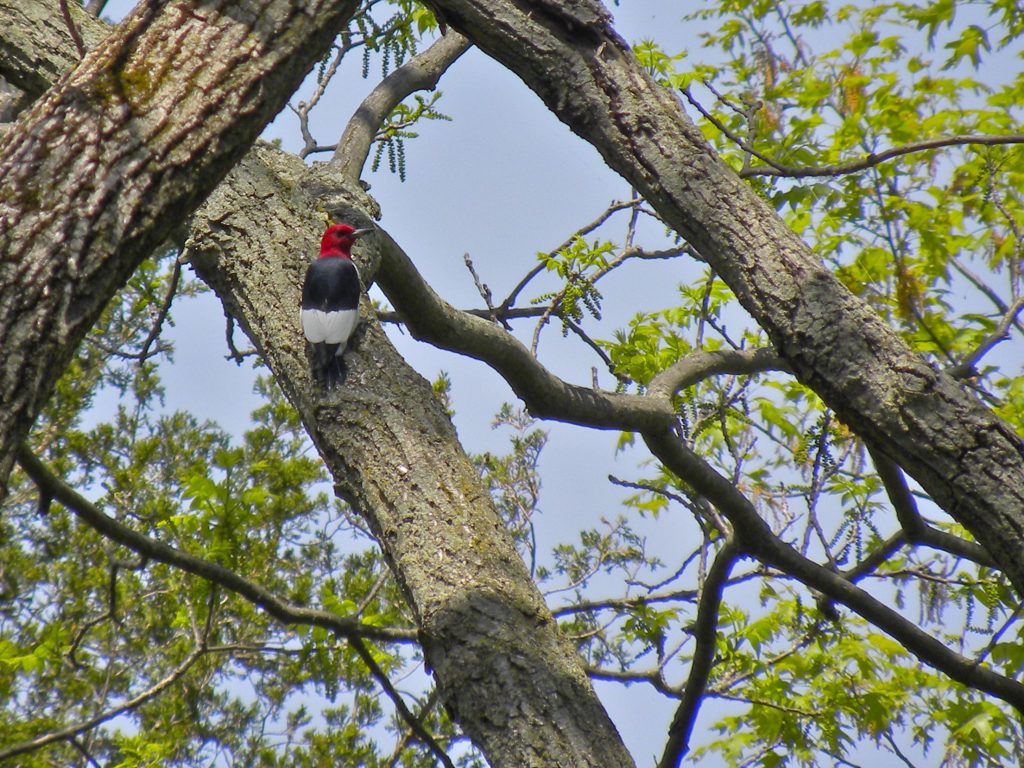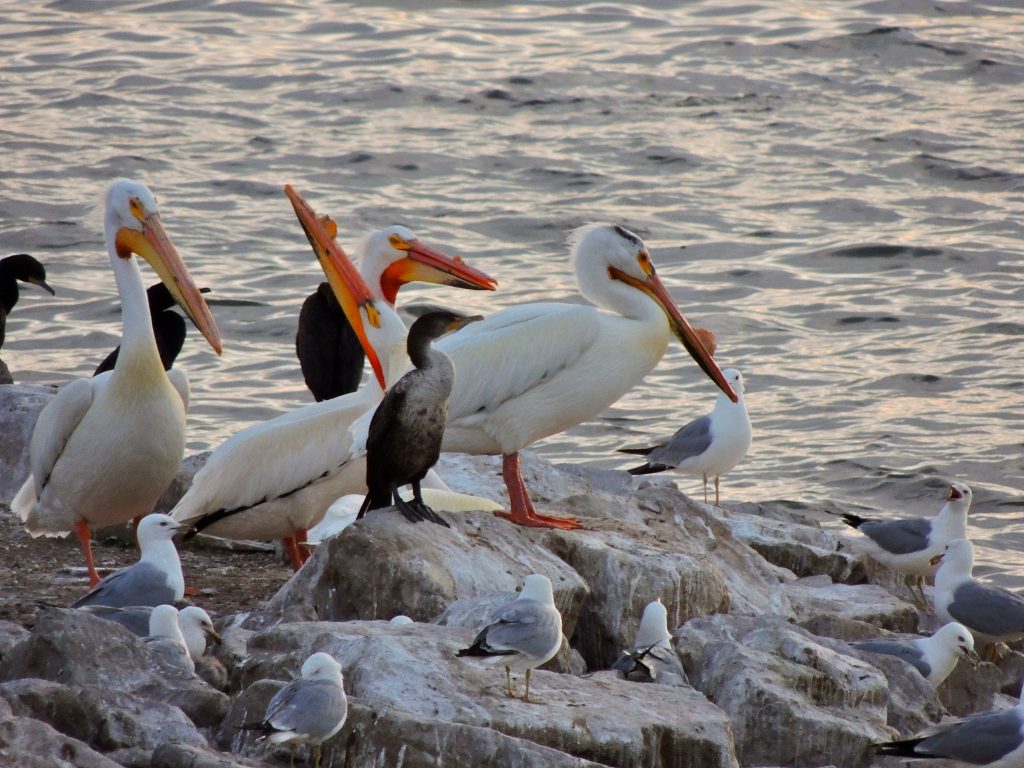May 8 2018 Cootes Paradise, RBG, Hamilton, ON. What a day! May birding is supposed to be like this, piling on challenges, exclamations and the improbable; enough to make you burn the candle at both ends.
Starting one of our usual transect routes we soon had a handful of Yellow Warblers, American Robins, American Goldfinches and Northern Cardinals singing within earshot . In no time we were celebrating seeing a Blue Gray Gnatcatcher, and hearing Carolina Wrens and Rose-breasted Grosbeaks. My companion, Alex, caught sight of a largish bird flashing black and white as it flew from treetop to treetop and pointed it out. My first thought was Rose-breasted Grosbeak but hardly were the words out of my mouth when I saw big blocks of black and white that made it a Red-headed Woodpecker, a spectacular and sensational sighting in southern Ontario. The photo below shows those big blocks and you can easily see why its folklore names included Half-a-shirt, Shirt-tail Bird and Tri-colored Woodpecker. and Alex may have wondered why I was so jubilant, but it’s a species in decline so all sightings are precious and Bird of the Day without doubt.

Moving on from that rather intoxicating moment we were soon at water’s edge trying to disentangle and identify swooping Barn Swallows, Tree Swallows and Northern Rough-winged Swallows when Alex, a little overwhelmed by it all, gestured up and asked, “And what’s that?” ‘That’ large, white bird with black and white wings, and an oversized, orange-billed head was an American White Pelican, unmistakable, improbable but as large as life. So why a pelican here? Simply because after they spend winter around the shores of the Gulf of Mexico they have to they pass over us on their way to breed in north-west Ontario and across Manitoba, Saskatchewan and Alberta. Still, en-route or not, a pelican overhead in Ontario in May has to be Bird of the Day; and that made two within twenty minutes.

And that was just the start of a richly enjoyable transect. It had its quiet moments but a couple of Bald Eagles, a pair of Cape May Warblers and a Northern Parula all added nicely to a day that produced nearly 500 birds of 47 species.